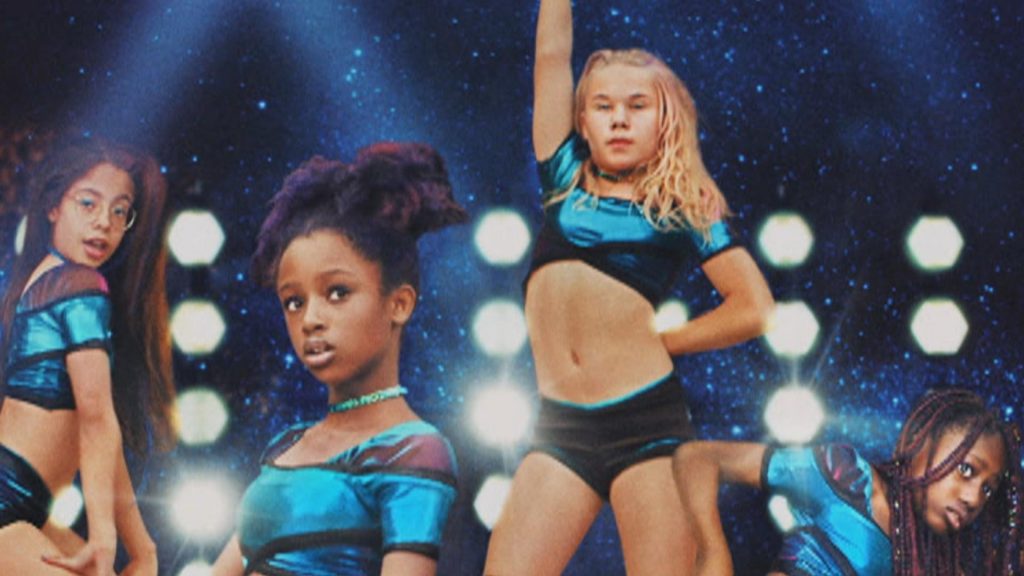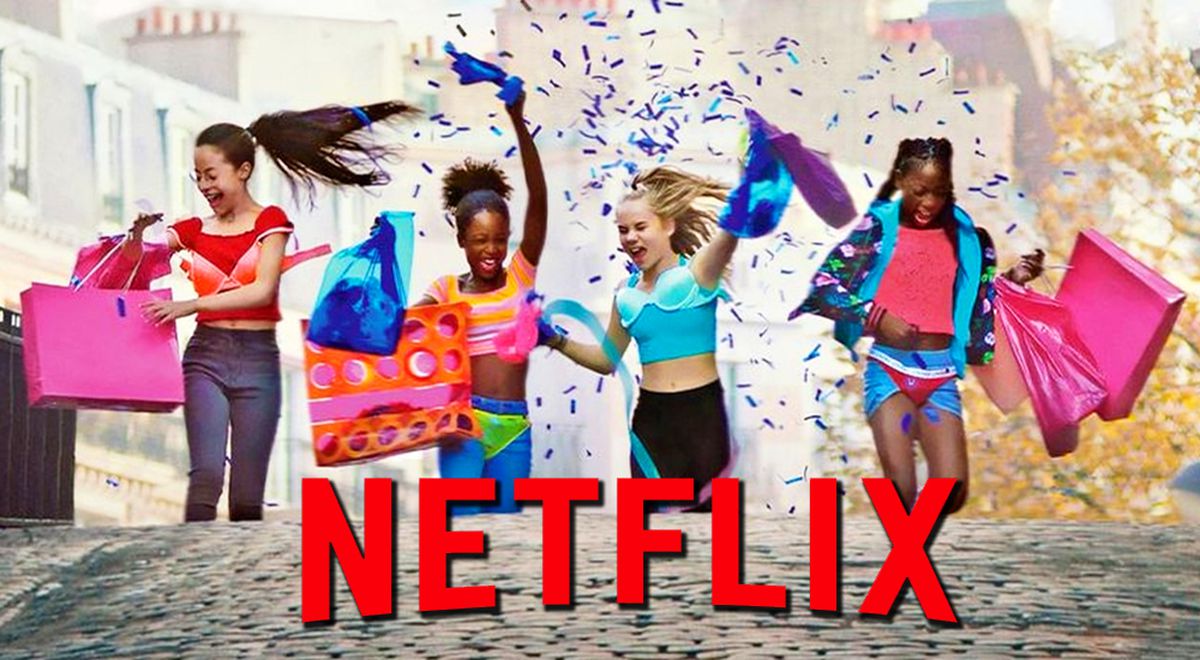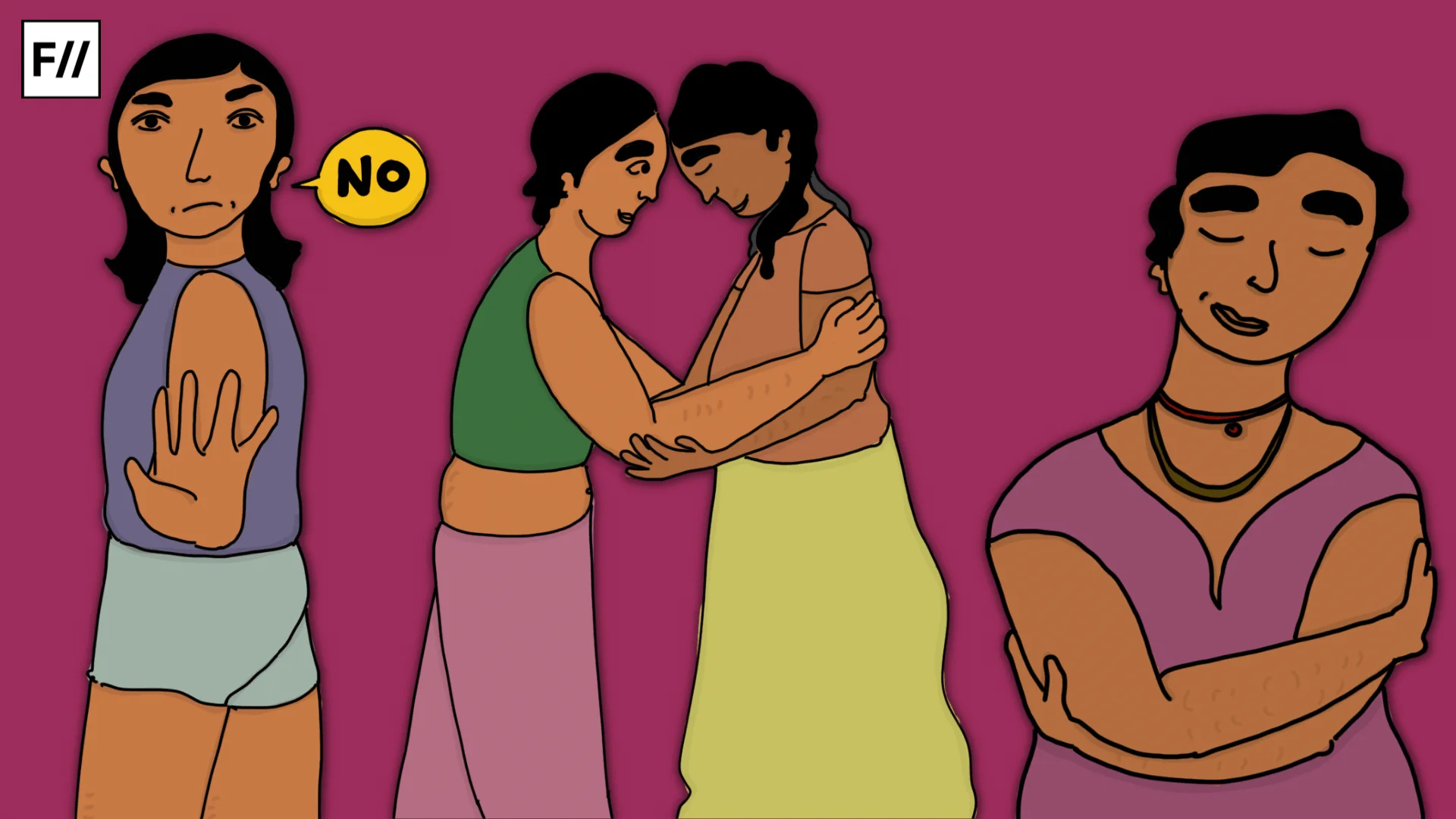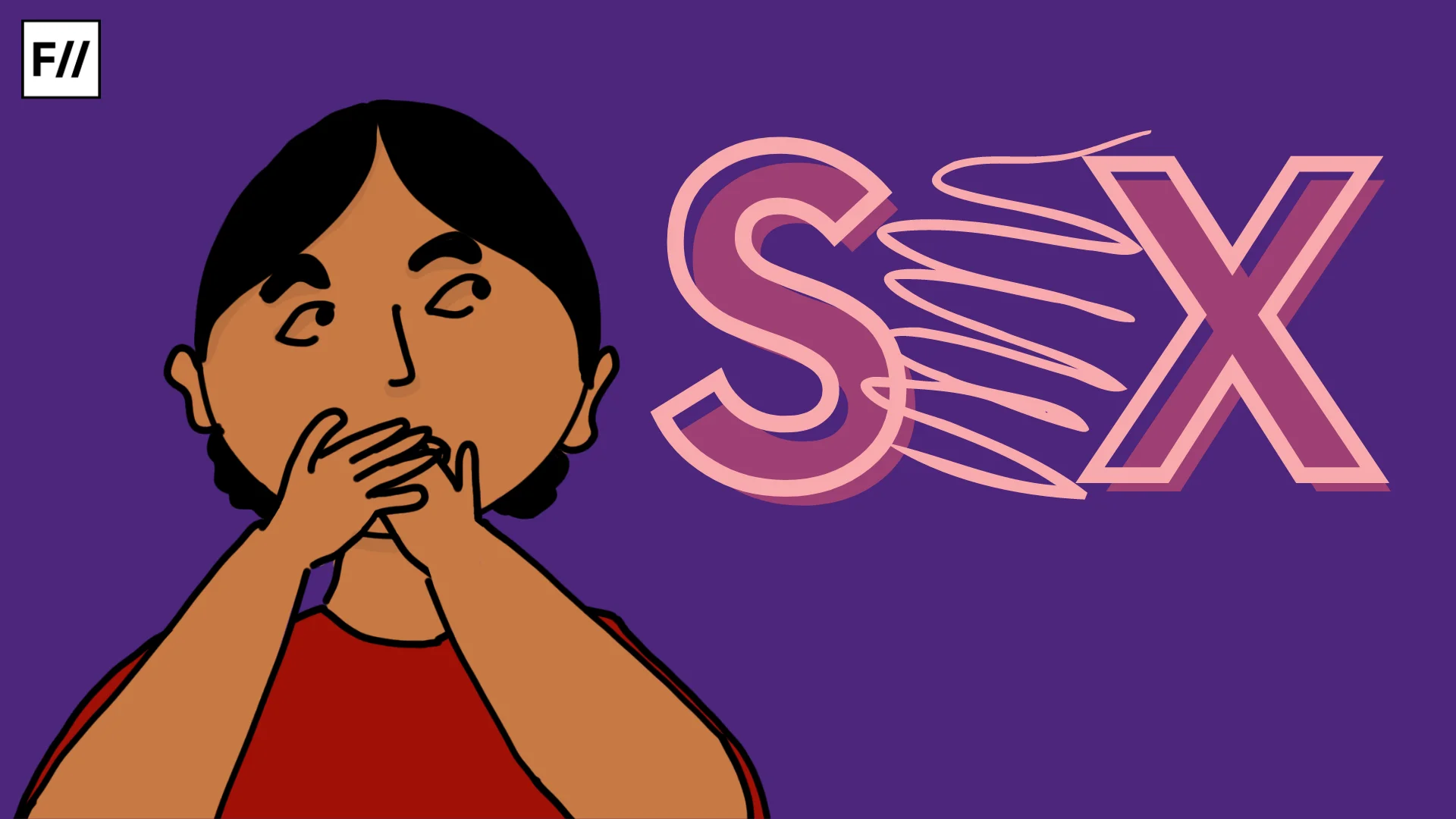‘Cuties’ is a film about desire and risk. Risking your true self to achieve what is perceived as desirable—one that comes in cohesion with validation. Whether it’s the principal—Amy (Fathia Youssoufor) or the ancillary ones such as Amy’s mom, Mariam (Maïmouna Gueye), her friend Angelica (Médina El Aidi-Azouni), they all are navigating between their heart’s desire and what is desired from them. There’s risk in desire, there’s desire to risk. In the duality in life, hiding in the cracks of identity, the labour in desire often feels like a burden; unattainable.
And then there’s the central issue of cultural conflict between Amy’s conservative upbringing and the new city her family has shifted — Paris. One that confines her and the other let her be. One represents her mother’s traditional origin and the other one introduces a group of free-spirited young girls called ‘cuties’. The director Maïmouna Doucouré refers to it as the two models of femininity Amy had to navigate through; only to end up more tangled and tired.
Cuties has raised both eyebrows and controversy in the west with claims of hypersexualising children and providing safe access to soft porn for pedophiles. Netflix’s controversial poster of the film fed as air to the fire. In the face of the outrage, Netflix had to remove it and apologise over twitter. Much to its anticipation several petitions on change.org have been out crying for a ban on the movie. Here, in India, the movie is easily accessible on the site and didn’t grab much attention from the netizens or the child rights advocates. But it needs to be looked at critically and discussed.
The polarised criticism claiming the movie as vile and inappropriate and soft child porn subjected to pedophiles, seems an oversimplified conclusion; owing to our personal discomfort and assumptions. This moral dilemma of the discourse also takes away the opportunity to look deeper at the merit of the movie and the director’s claim of it to be a “social commentary against the sexualisation of young children.” And for me, that is where the movie fails.
Cuties has raised both eyebrows and controversy in the west with claims of hypersexualising children and providing safe access to soft porn for pedophiles. Netflix’s controversial poster of the film fed as air to the fire. In the face of the outrage, Netflix had to remove it and apologise over twitter.
Amy is an eleven-year-old black immigrant girl from Senegal. At home, Amy’s mother Mariam takes her to a prayer circle where the women are told that evil resides in “the bodies of uncovered women.” Mariam and Amy both struggle with Amy’s father’s decision to take another wife. While Mariam tries to force herself to accept the arrangement with grace, Amy rebels against it. Understandably feeling angry and confused, Amy internalises her mother’s misery and seeks escape.
What she perceived as an escape is the group “cuties,” a bunch of popular girls at school who lie, steal, fight, and exhibit precocious sexual curiosity, influenced by pop culture and media. Amy is fascinated by their twerking dance, confidence, agency and ownership of their body & desire, which is in stark contrast to Mariam’s religious customs, values and traditions. This plants the fantasy in Amy to distance her from ‘what she is’ and become ‘what she can be’. This ‘becoming’ involves the quest for recognition on social media, validation from peers. Her desire is shaped by social validation.
Isn’t desire a social construct anyway?
The film doesn’t delve deeper into that but bypasses holding Amy’s outrage at the center, and defiance of, a patriarchal order. The escape is tricky. She runs away from the hegemony of patriarchy and ends up serving the patriarchal gaze towards female bodies. And here is where the shift from sexuality to sexualisation occurs. My naked body might be my sexuality in my eyes, in your eyes it might be sexualised. Sexualisation doesn’t lie at bodies but gazes.

There’s anger in the film, there’s grief in it, there’s grit, but what comes out effortlessly is the authenticity of the narrative. And clearly so, as it was a story of a non-white Muslim immigrant by a non-white Muslim immigrant director. The nuances don’t get lost in appropriation. But that’s not all, there’s more to unfold.
Crossing The Line, Missing the point
You don’t show drug consumption by children or make them do drugs to educate others about the consequences of drug addiction among children. Similarly, you don’t talk about sexualisation of young girls by sexualising them on screen. That way, you become part of the problem that you purport to protest. The unnecessary zooming on the bodies-crotches of the pre-teens, twerking, erotic expressions and age-inappropriate dresses would make some viewers cringe in embarrassment and as we don’t live in an ideal society, would be a treat for some; and there’s the problem.
Also read: The Problematic Representation Of Queer Masculinity In Disney Films
One scene shows Amy pulling down her underwear to photograph her genitals and then posting it on social media. Earlier in the scene, she tries to seduce her adult cousin to get out of trouble for stealing his mobile phone. At another point, Amy is browbeaten by her new Cuties friends into an attempt to take a picture of a boy’s penis in a school bathroom. These are deeply discomforting scenes to sit through. Is my discomfort solely because of the fear that pedophiles are being encouraged? No, sexual offenders don’t get encouraged seeing erotic visuals and then offend, they offend because they can and want to. ‘They are asking for it’ is an irresponsible excuse that can’t be managed by controlling anything else but the gaze of offenders.
My discomfort is around normalisation and acceptance of the sexualisation of children in media and mainstreaming it. It is informing the world that it’s okay, as long as it’s being filmed for a purpose. There’s no way to know how much the eleven-year-old actor’s given consent is informed. Could they actually comprehend the real-life or future consequences of putting something out there that is inerasable? There are serious concerns over their safety and the safety of plenty of other kids who had to go through the audition.
The film doesn’t delve deeper into that but bypasses holding Amy’s outrage at the center, and defiance of, a patriarchal order. The escape is tricky. She runs away from the hegemony of patriarchy and ends up serving the patriarchal gaze towards female bodies. And here is where the shift from sexuality to sexualisation occurs.
The movie explores how girls become women, sometimes sooner than they should, forced into adulthood by the society they live in and the media they consume. But the movie doesn’t talk about the consequences when young girls put themselves out there. There’s hardly any scene that depicts the threat they could have been subjected to, which is otherwise usual in the real world. It seems too utopian to be true. It projects the desire of those children as the only risk and risk as a single avenue that only leads to a threat to selfhood.
The adults in the movie seemed pretty responsible anyway, then what is the commentary in their part? Is it suggesting the moral policing of young people’s sexuality; now that that is established as vile. The correct answer would have been guiding them through it, but that hardly came across.
Moral, And Not Social commentary
Amy realises during the most controversial scene in the movie — the cuties’ dance routine — that this isn’t who she is or wants to be and runs off the stage to find her mother. Thereafter, she changes into an age-appropriate outfit and plays outdoors with a skipping rope, a reminder of what girlhood ought to look like.
Upholding a format of innocence that is immune to personhood and sexuality, upholding ‘desire’ of a kind; that is perceived as appropriate by the people residing outside of the person’s body & mind- for me misses the point. Amy struggles through self-esteem and seeks validation throughout the movie and eventually gives up on something that validates her as a ‘good child’, as a ‘good girl’, without much of any friction. Why did Amy want validation? Why did she desire to escape? Did she dance only to please and not self-pleasure? All these remain untouched, unanswered.
Also read: Families Of Choice: Looking Through The Queer Lens
If Amy would have been a real-life person, I would sit by her side and share how I risked so much in my pre-teens to meet my heart’s desire. All that I wanted was personhood, just like her and many many others. It’s ok to explore, desire and risk; owing to the belief that not all risks lead to threat. The onus of making those experiences safer, respectful, informed, healthier lies with the adults and systems, not you.
Featured Image Source: Explica
About the author(s)
Sudipta Das(He/They) is a communications professional having experience of working on issues around gender-based violence, child rights, queer rights and sexuality. They have been an India Fellow'17 and a Likho Citizen Journalism Fellow'19. They believe in intersectional feminism and wish to write elaborately on the subjects of media, caste, sexuality and mental health.




